ufo sightings explained as experimental SR-72 and XB-70 platforms
Most likely answer in my opinion is that human inventors have some experimental vehicles that are so secret that even the regular Navy is unaware of their existence.
Do we really believe the SR71 and the F117 were retired with no replacements entering service? These vehicles could be far more maneuverable than anything Naval aviators have seen. And as for making high G maneuvers, simple answer is they are unmanned.
I sleep better at night believing that the US military is flying these unidentified flying objects. That's my humble opinion
Turbine Based Combined Cycle (TBCC)
NASA has funded a parametric design study by Lockheed Martin to establish the viability of a Turbine Based Combined Cycle (TBCC) Propulsion system consisting of integrating several combinations of near-term turbine engine solutions and a very low Mach ignition Dual Mode RamJet (DMRJ) in the SR-72 vehicle concept. The SR-72 would fly at speeds of Mach 6.0.
Task Order No.NNC15TA03T provides for a parametric design study to establish the viability of a Turbine Based Combined Cycle (TBCC) Propulsion system consisting of integrating several combinations of near-term turbine engine solutions and a very low Mach ignition Dual Mode RamJet (DMRJ) in the SR-72 vehicle concept. Task Order NNC15TA03T is issued under Contract NNC10BA08B on a firm fixed price basis. Firm fixed price is $892,292.
For this study, in an apples-to-apples comparison, NASA will have LM utilize the SR-72 models and design methods that were developed from the previous studies but this time they will use Commercial off the shelf (COTS) turbines that are already deployed in military aircraft along with a low Mach ignition DMRJ. Therefore, based on the above, LM is the only U.S. Company that can effectively and economically provide NASA with the data and knowledge being requested in this task order.
LM is the only U.S. Company that has been actively developing an air-breathing hypersonic vehicle that utilizes a TBCC propulsion system namely the SR-72. They accomplished this through IRAD and a series of competitively selected DoD contracts throughout the past decade. As the direct result of this govermnent and IRAD investment, the SR-72 concept is a high fidelity model that would be both cost and schedule prohibited for NASA to duplicate. LM has the aerothermal flight database, a highly developed integrated inlet system, a high speed DMRJ test data from the FALCON program, and most importantly an integrated flight model with outer mold lines defined. As such LM is the only U.S. Company that has a high fidelity vehicle design to conduct a parametric study of this nature for NASA.
The contracts of record where LM was competitively selected to develop the SR-72 vehicle and the TBCC propulsion system concept are: i) 2006-2009 DARPA FALCON contract # HROOl 1- 04-9-0010 sub task for $40M, ii) 2009-2010 DARPA/AFRL Mode Transition Demonstration (MoTr) Program under AFRL VAATE Task 2 contract # FA8650-09-D-2926 0002 for $8.4 M, and iii) 2012-2013 AFRL Air Vehicle Integration and Technology Research (AVIATR) Task Order 0031 contract # FA8650-08-D-3858-0031 for $0.7M. In all of these previous government design studies, LM was directed to use advanced high speed turbine engines that were either under development or were just conceptual designs. In other words, the advanced turbines were non-existent.
Dual Mode Ramjet (DMRJ) Combustor
In 2014 innovators at NASA’s Glenn Research Center developed a new dual-mode ramjet combustor capable of operating over a wide Mach number range during flight. The challenge is to develop an air-breathing combustor that operates in both subsonic and supersonic combustion modes. This new engine innovation operates as a conventional ramjet at low speed, offering higher efficiency than current dual-mode scramjets. It can then transition to supersonic combustion in a free-jet mode in the appropriate flight condition.
During flight, the propulsive stream is not in contact with the combustor walls and equilibrates to the combustion chamber pressure. Glenn’s combustor can operate as a traditional ramjet at lower flight Mach numbers than current dual-mode scramjets, bridging the gap between turbine or rocket-based low-speed propulsion and scramjets.
The cross-sectional area distribution required for supersonic combustion is accommodated aerodynamically without regard for wall-pressure gradients and boundary-layer separation It allows the potential use of hydrocarbon fuels to higher flight Mach numbers.
Dual Mode Ramjet (DMRJ)
In April 2014 Aerojet-General Corporation was granted patent 8,701,379 for a combined cycle integrated combustor and nozzle system. This invention relates to a combined cycle engine system that combines a turbojet or other booster engine and a Dual Mode Ramjet (DMRJ) to permit efficient operation from takeoff to hypersonic speeds and more particularly from Mach 0 Sea Level to Mach 5+ at high altitude.
As the Combined Cycle Engine accelerates the vehicle from Mach 0 to in excess of Mach 4, from Mach 0 to about Mach 2 incoming air delivered to the DMRJ is accelerated by primary ejector thrusters that may receive oxidizer from either on-board oxidizer tanks or from turbine compressor discharge air. As the Combined Cycle Engine further accelerates the vehicle from about Mach 0 to in excess of Mach 4 exhaust from the booster engine and exhaust from the DMRJ are combined in a common nozzle disposed downstream of a combustor portion of said DMRJ functioning as an aerodynamic choke.
A conventional DMRJ cannot produce thrust to accelerate itself to supersonic speeds. The DMRJ must be boosted by some other propulsive element, such as a Turbojet Engine (TJ) and/or an Ejector Ramjet (ERJ). When the booster engine is a turbojet (turbine) engine, the combined cycle engine is referred to as a Turbine Based Combined Cycle or TBCC engine. If the booster is a rocket engine, it is referred to as a Rocket Based Combined Cycle or RBCC engine. When both booster types are used, the combined cycle is referred to as a Turbine/Rocket Based Combined Cycle T/RBCC engine.
In prior art reusable hypersonic vehicle concepts, the turbine engines of a TBCC engine are expected to produce all of the thrust at subsonic and low supersonic speeds. At some higher speed, the DMRJ is turned on to produce the required thrust and the TJ is turned off at nearly the same speed and taken out of the flow. The thrust of the TJ engine as the sole propelling means during the bulk of the acceleration places a great demand on the TJ technologies.
Prior art TBCC engines have little or no DMRJ thrust contribution at speeds below Mach 3-4. The highest thrust requirement for these vehicles occurs during acceleration from subsonic to supersonic speeds. This so called "transonic" speed has the greatest drag to overcome. From the foregoing, it is seen that the greater the thrust contribution from the DMRJ during acceleration the less demands are placed on the turbine engine.
Current turbine engine technology is suitable for speeds up to Mach 2.5. Above this speed, the air temperature becomes too high to permit high compressor pressure ratio without exceeding the turbine entrance temperature limits. This results in a reduction in engine airflow and thrust. A Lockheed SR-71 high-speed, high-altitude, reconnaissance aircraft was able to fly at about Mach 3.25 by bypassing some of the air around the final compressor stages in the Pratt & Whitney J-58 engine. This unloaded the compressor, reducing the combustion heat addition required upstream of the turbine.
Such an engine cycle is referred to as a Turbo-Ramjet since most of the high Mach thrust is produced in an afterburner downstream of the turbine. This engine cycle is not a preferred cycle for a TBCC system which would need a third duct for DMRJ operation. Since the DMRJ duct must operate at speeds beyond what the TJ can stand, the DMRJ air flow must bypass the TJ completely. One important issue with the prior art TBCC engines is the requirement for the Turbine engine to operate to Mach 4 or higher. This places a large technical hurtle to develop a pure Turbojet that can operate with high thrust at Mach 4 or higher. The thrust a TJ can produce as a function of Mach number is dependent on the technologies applied. For Mach 4 operation at high thrust, advanced high strength high temperature materials are needed that are not currently available.
This invention improves the performance of a combined cycle engine during the critical acceleration from takeoff to ramjet takeover and includes two elements that significantly increase the combined thrust of a booster and DMRJ components when operating in parallel (Mach 0-3+). At speeds below where a ramjet is normally capable of operating, turbine compressor bleed air or onboard oxidizers are used to drive small primary ejector thrusters to induce airflow into a dual mode ramjet flowpath and produce thrust as a well known Ejector Ramjet (ERJ). In addition, I integrate the DMRJ and booster flows in a synergistic way to increase the overall engine thrust. In this integration, both engines exhausts are merged into a common nozzle. Underexpanded booster engine exhaust is used to create an aerodynamic choke for the DMRJ.
This technique solves a critical problem with a low speed DMRJ by providing a larger combustor area and increases the thrust without unstarting the inlet. This allows higher combustion temperature in the DMRJ flow which increases the volume of gases in the nozzle increasing the pressure and thrust while reducing overexpansion losses. In this disclosure, I discuss the combustor and nozzle integration. The high Mach Turbojet engine thrust and technology requirements can be reduced by using a DMRJ engine integration that provides high thrust at low speeds to contribute to the total vehicle thrust.
This invention is an improved combined cycle propulsion system that more completely and efficiently combines the operation of a booster and Dual Mode Ramjet engines. Parallel operation of the DMRJ with the booster engine is enhanced by employing Ejector pumping at low speeds and higher DMRJ combustor area ratio at mid speeds via an aerodynamic choking with the booster exhaust. The combined nozzle flows are more efficient than separate nozzles.
Turbine-based Combined-cycle Direct Connect Combustor
On December 15, 2014 Aerojet Rocketdyne was awarded $1,099,916 by Glenn Research Center on contract NNC15TA07T for Turbine-based Combined-cycle Low Mach Risk Reduction Direct Connect Combustor Testing. One of the major challenges to achieving effective and affordable hypersonic flight is the ability to have a single engine start at zero velocity and accelerate to Mach 6+. To date the combined cycle engine approach, where one engine known as a gas turbine accelerates to a velocity that enables another engine known as a scramjet to take-over and accelerate the rest of the way has been investigated. This would be an acceptable solution except that the take-over velocity for the scramjet has been too high to be able to use an Off-the-Shelf (OTS) turbine as the first engine. Therefore getting to hypersonic speeds has been held back because of the need for two costly engine developments with uncertain outcomes on the success of both engine developments.
Aerojet Rocketdyne (AR) had developed technology which has shown through testing, under Independent Research and Development (IRAD) funding (using the direct connect combustor internal mold lines from DARPAs Falcon Combined Cycle Engine Test, FaCET, program), that it may very well be possible to have a dual mode ramjet propulsion system that allows the take-over velocity to be reduced to Mach 2 or lower and transitions to the scramjet engine permitting the vehicle to accelerate to cruise operating conditions.
This take-over velocity would allow an OTS available turbine engine to be used, greatly reducing cost and risk and decreasing the development time by at least 10 years. The purpose of this task is to use the scramjet technology developed by AR and explore and characterize ignition, operability and performance at simulated conditions representing Combined Cycle and Ramjet modes of operation over the mode transition corridor.
The overall objective of the Turbine-Based Combined-Cycle (TBCC) Low Mach Risk Reduction Direct Connect Combustor (DCC) Testing is to advance key enabling technology for TBCC hypersonic propulsion systems by extending low Mach and altitude operation of ARs 3rd generation powerhead for the dual-mode scramjet propulsion system while maintaining maximum flight Mach capability. The specific objectives are to explore and characterize ignition, operability and performance at simulated conditions representing Combined Cycle and Ramjet modes of operation over the mode transition corridor. AR will conduct a hydrocarbon fueled direct connect test that provides a flexible, low cost approach which will reduce risk for TBCC hypersonic propulsion systems
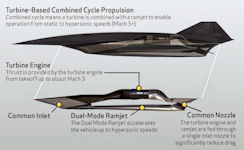
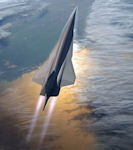
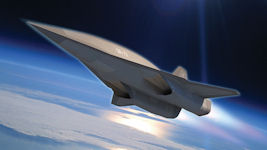
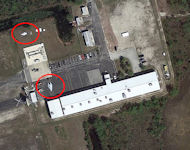
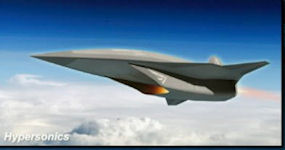
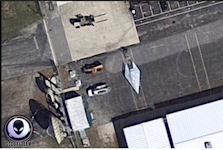
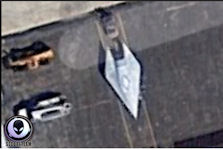
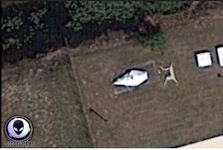
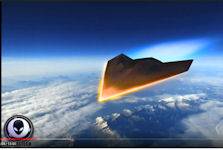
Comments
Post a Comment